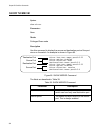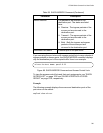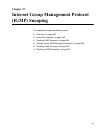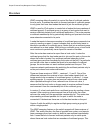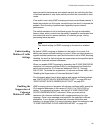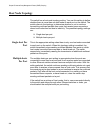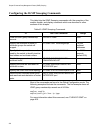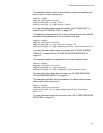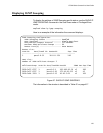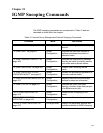
Chapter 23: Internet Group Management Protocol (IGMP) Snooping
398
Host Node Topology
The switch has a host node topology setting. You use this setting to define
whether there is more than one host node on each port on the switch. The
switch refers to the topology to determine whether or not to continue
transmitting multicast packets from ports that receive leave requests or
where host nodes time out due to inactivity. The possible topology settings
are:
Single-host per port
Multiple-hosts per port
Single-host Per
Port
This is the appropriate setting when there is only one host node connected
to each port on the switch. When this topology setting is enabled, the
switch immediately stops sending multicast packets from ports on which
host nodes have sent leave requests or have timed out. The switch
responds by immediately ceasing the transmission of additional multicast
packets out the ports.
Multiple-hosts
Per Port
The multiple-hosts per port setting is appropriate when the ports are
connected to more than one host node, such as when ports are connected
to other Ethernet switches where there are multiple host nodes. With this
setting selected, the switch continues sending multicast packets out a port
even after it receives a leave request from a host node. This ensures that
the remaining active host nodes on a port continue to receive the multicast
packets. Only after all the host nodes connected to a switch port have
transmitted leave requests, or have timed out, does the switch stop
sending multicast packets out a port.
If the switch has a mixture of host nodes, that is, some connected directly
to the switch and others through other Ethernet switches or hubs, you
should select the multiple-hosts per port setting.





